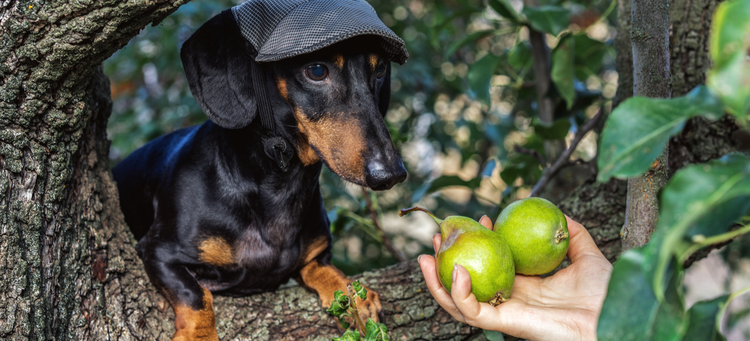
Can Cats and Dogs Eat Pears?
Yes, cats and dogs can eat pears, although like many other fruits, that doesn’t mean that they need to or should. Pears are not toxic or dangerous, and offer the benefits of fiber, antioxidants, vitamins A, C, K, and copper without being high in calories. Some dogs enjoy the taste of pears, but because cats lack taste bud receptors for sweet foods, it’s hard to predict if they’ll enjoy eating this fruit.
Dogs are classified as omnivores, which means they derive nutritional benefits from both plant and animal products, while cats are obligate carnivores and derive their energy requirements from animal tissues. This means that the nutritional benefits of pears are minimal for cats.
The Dangers of Pears for Cats and Dogs
There are eight possible concerns to keep in mind when feeding pears to pets.
They are:
- Fresh produce can contain bacteria, such as salmonella, E.coli, and Listeria. Contamination can occur at the farm, grocery store, or even in our kitchens. Symptoms of infection include vomiting, diarrhea, lethargy, dehydration, weakness, lack of appetite, and organ failure.
- Pears can be contaminated with a variety of pesticides, which can be toxic or cause gastrointestinal distress in some pets.
- Risk of choking can occur from ingestion of pits or large pieces of pear. This is more common in small dogs.
- The pear pit contains trace amounts of cyanide, which can be toxic and should never be fed to pets.
- Pancreatitis or gastrointestinal issues can occur in some dogs and cats that aren’t accustomed to eating pears. Clinical signs include vomiting, diarrhea, lethargy, lack of appetite, flatulence, or abdominal discomfort.
- Although documented allergies to pears are uncommon in dogs and cats, some pets may be allergic. Learn more about food allergies in dogs and cats.
- Baked goods, pastries, or other pear-flavored human foods containing xylitol can be toxic to dogs.
- Leaves and stems are difficult to digest and can cause gastrointestinal irritation or obstruction.
If your dog or cat ingested pear, a pear pit, stem, or leaves, and is showing symptoms such as trouble swallowing, choking, coughing, vomiting, diarrhea, abdominal pain, straining to defecate, lack of appetite, or lethargy, please call your veterinarian or closest emergency clinic.
Do Cats and Dogs Need Pear?
There is nothing in pears that pets require, however, they can be a low-calorie treat for dogs. What cats and dogs do need is a high-quality, AAFCO-approved food formulated to meet their life-stage.
The Safest Way to Feed Pears to Cats and Dogs
The safest way to give pear to your pet is to feed small pieces of fresh or cooked, washed, and peeled fruit that is free of the stem, seeds, and leaf remnants. The size of the pieces should be similar to their kibble.
Do not feed pear-flavored pastries or candy sweetened with xylitol or any pear-based dishes cooked with other foods that can be toxic, such as raisins, onions, or garlic.
How Much Pear Can You Give a Pet?
If offering pear as a snack, approximately 1 tablespoon is plenty for a small dog or cat, 2 tablespoons for a medium-sized dog, and 1/4 cup for a large-sized dog or approximately ¼ of the fruit.
Can Cats and Dogs Be Allergic to Pears?
While it is possible for cats and dogs to be allergic to anything, allergies to pears are uncommon. More common food allergens are protein-based items like chicken, beef, or dairy products. Symptoms of allergies can include skin infections, ear infections, dry skin, and persistent itching.
We hope this article helps to keep your pets safe. Learn more about what pets can and can’t eat in these articles specifically for dogs and cats.